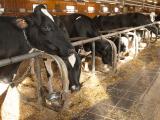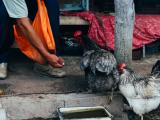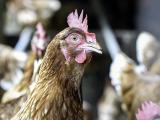Mar 23, 2010
Illegal Vietnamese poultry trade continues amid H5N1 deaths
Although Vietnam has reported two human deaths from H5N1 influenza already this year, the illegal sale and slaughter of chickens and other fowl that have not passed inspection continues in Ho Chi Minh City and surrounding areas, according to an investigative report in Thanh Nien News. Authorities have offered little help in remedying the situation. Apparently poultry is brought to markets from the Mekong Delta by motorbike or car. The vehicles avoid highway inspection stations by speeding past or using back routes. In addition, traders whose poultry is seized warn other traders, who then disperse. Animal safety officials are calling on local police to crack down on the illegal trade. According to the article, Vietnam has had 59 human deaths from H5N1 flu since the outbreak began in 2003 (the World Health Organization has confirmed 58 of these to date, including one in 2010).
Mar 23 Thanh Nien News article
Task force sees waning attention to H5N1
An international team of experts, the Scientific Task Force on Avian Influenza and Wild Birds, in a statement today expressed concern about the lagging interest and effort on the part of governments and the public over H5N1 avian influenza despite its persistence. The waning attention is resulting in reduced surveillance and research opportunities, along with declining coordination between environmental and agricultural authorities, even as the disease continues to spread, particularly in Egypt and parts of Asia. The task force, which issued its statement following a meeting at the United Nation's Food and Agriculture Organization (FAO) headquarters in Rome, said that poor farm biosecurity and the trading of infected poultry are the main causes of disease spread. Wild birds have received much blame for the spread of H5N1, but research has yet to show that they pose more than negligible risk to domestic poultry and humans.
Mar 23 FAO article
Study pinpoints protein that may protect birds from H5N1
Ducks are often resistant to the same avian influenza viruses that killing chickens. Researchers from the University of Alberta and St. Jude Children's Research Hospital in Memphis, Tenn., found that the protein RIG-I plays a role in clearing influenza infection in ducks. They also found evidence that RIG-I may be absent in chickens, which could explain their increased susceptibility to flu viruses compared with ducks. In addition, they found that injecting RIG-I into chicken embryonic cells resulted in lower influenza replication when the cells were challenged with either low-pathogenic or highly pathogenic H5N1 avian flu viruses. This, as the authors state, "opens the possibility of increasing influenza resistance through creation of a transgenic chicken."
Mar 22 Proc Natl Acad Sci study abstract



















